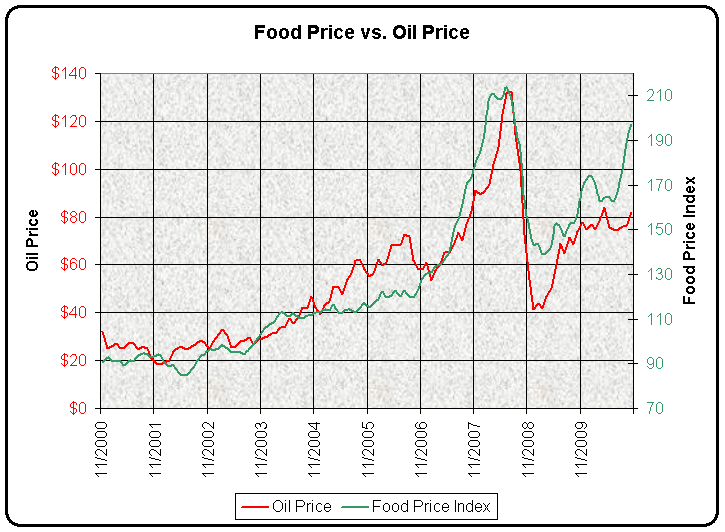Note to mods: this is my own original work, so I'm posting more than 4 paragraphs.
Connecting the Dots: Food and Fossil FuelsIt's well known that every calorie of food is created and delivered in a supply chain that contains between 7 and 20 calories of fossil fuels (depending on whether you're talking about grain or meat). The implications of that linkage are enormous, especially now that our oil supply is showing incontrovertable signs of having peaked. We have already had one episode of sharply rising food prices in 2007, and we may be about to face another price spike that could be even worse.

Global oil production appears to have peaked. World oil production has been on a plateau for the last six years. Even when prices tripled in 2007 the amount of oil being produced didn't budge. We are now pumping oil as fast as we can.
Unfortunately our situation is even worse than this. Not all of the oil that is being pumped makes it onto the world market. Oil producing countries keep some of their production for their own use, and sell the rest. This amount is known as their net oil export. When you tally up the net exports of the world's major producers, you get the amount of oil on the world market and any point in time.

As the amount of oil on the world market falls, the price naturally rises. This is what happened in 2007, when the price of oil spiked to $147 per barrel. It's important to note that this would happen whether or not there was speculation on the price of oil futures. While speculation might make the price swings a little more dramatic, the underlying drivers are still our old friends supply and demand.
That is my explanation for the recent and imminent spikes in world food prices. Now what about food production? How tightly is the amount of food we are able to produce tied to the availability of fossil fuels?

That flat line tells us that for the last 45 years it has taken a constant amount of fossil fuel to produce a ton of grain. For every ton of fossil fuels we extract, we can produce just under a quarter of a ton of grain. No changes in technology or efficiency have altered this iron-clad ratio since 1965. While we produce about 2.5 times as much grain in 2010 as in 1965, this has been matched and supported by an identical 2.5 times increase in fossil fuel extraction.
To make it perfectly clear, here's how I interpret our situation:
- The correlation of fossil fuel and food production strongly implies that if FF availability begins to fall, food production will probably begin to decline within a couple of years.
- We have been on an oil production plateau for five years. Production has stagnated.
- The world's net oil exports have begun to fall.
- This stagnation in oil production is driving oil prices up, which drives up food prices.
- As oil production begins to fall and exports continue to decline, food production will begin to fall.
- Falling food production and rising oil prices will combine to create havoc in the global food market.
- We are on the brink now, and the effects will probably begin to materialize later this year.
I don't see any good outcome for this. It's probably time to secure your personal food supply, and it may be past time to address the problems in insecure regions of the world.